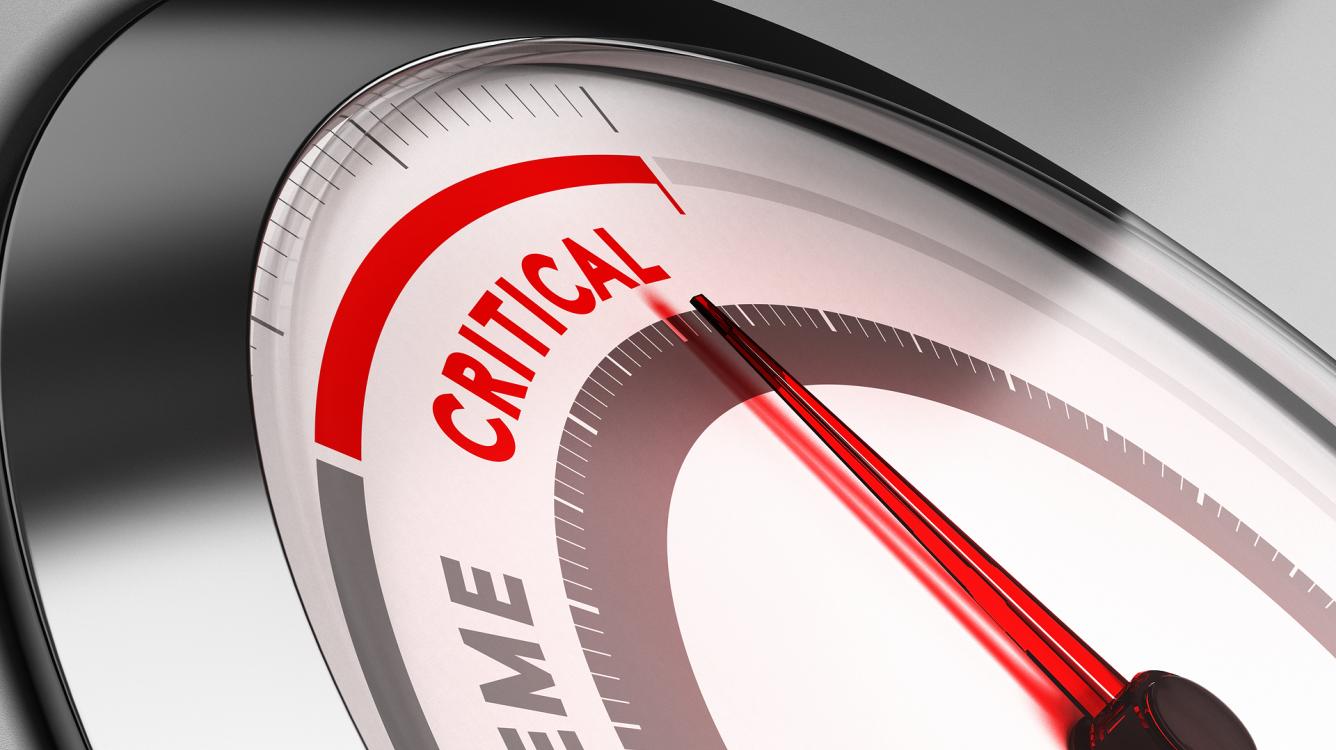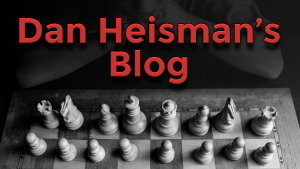
How To Think Critically In Chess
Chess is a thinking game. Thought processes and time management are intertwined and are two of the most important skills.
I break down time management into two sub-skills:
- Macro Time Management: The ability to use almost all of your time every game without getting into unnecessary time trouble.
- Micro Time Management: The ability to allocate more time to the moves which require more thought.
Micro Time Management can broken down further into two parts:
- The clock situation, which includes how much time you have remaining on your clock, and, if there is a non-sudden death time control (e.g. 40 moves in 90 minutes), the current move number (and thus how many moves are left in the time control).
- The position on the board with respect to how much time the current move deserves. This latter aspect of Micro Time Management can be called the Criticality Assessment.
Usually a critical position calls for extra care and extra time. What can be considered a critical position? Let's start with a list provided by GM Lev Alburt and Al Lawrence in their book "Chess Rules of Thumb."

Rule of Thumb #135 is
"Recognize five characteristics of a critical position:
- When the game changes from known theory into unknown territory, from opening to middlegame, or from middlegame to endgame.
- When any pieces are exchanged, especially queens.
- When there is any change, or possible change in the pawn structure—especially in the center.
- When you have a tactical (short-lived) advantage which will disappear if not exploited now.
- When you see a move which seems to win."
Their very next Rule of Thumb, #136, is:
"A critical position is one about which you should think long and hard."
This is all good stuff, and I would like to add more on the subject.
A critical position is one where if the best move(s) are not chosen, then the likely outcome of the game is affected.

The result hangs in the balance.
In other words, it's a position where if you make a mistake, you can throw away a win or a draw. One example would be a complicated position where you are winning, but finding the winning move is difficult and it will likely take quite a bit of accurate calculate to find that win. If you fail to find it and play another move, you have thrown away the win. It was obviously critical that you find the correct move.
Conversely, you might be winning easily, but there may be some critical moves where you have to be careful about seeing your opponent's possibilities as they attempt to get back in the game. If you let down your guard in one of these critical situations, you may find that you are no longer winning, easily or not.
There are clearly two types of critical moves:
- Complicated, tactical moves that might decide the game.
- Strategic decisions that either do, or could, have a large effect on how the remainder of the game will be played.
Clearly, it is the complicated tactical critical moves which will take the most time. However, it still stands to reason that extreme care, and some thought, should be applied to critical strategic decisions.

Put your best thinking face on.
Alburt and Lawrence name quite a few examples of strategic critical moves and, in my Novice Nook article The Most Important Strategic Decisions, I list eight possible decisions of that type which can easily be critical.
- Close the position or open it up?
- Trade queens or not?
- Trade into a king and pawn endgame?
- When to attack?
- Where to attack?
- Where to put the king?
- How should I adjust my strategy for material?
- Do I get enough compensation for an uneven exchange/sacrifice?
For example, in #6, if castling is not part of your "book" moves, you may find yourself deciding on which side you should castle or, occasionally, whether you should castle at all.
This is only an article, not a book, so we don't have space to cover various examples of each strategic critical decision, but I would like to provide a couple. Here is one of my favorite examples of #2, Trade queens or not:
White has a strong attack along the g-file with a threat of h4-h5; therefore, he should decline Black’s offer to trade queens. Strangely enough, White understood that trading queens with 1.Qxd8 was bad, but for some reason he forgot that just because he doesn't initiate the queen trade doesn't mean the queens can't be traded if he doesn't move his queen! So he played the terrible 1.h5?, amounting to the same bad result. Of course, Black should not move the knight and allow mate with 2.Qxg7 but, instead, he first traded queens with 1…Qxg5 when after 2.Rxg5 Ne7 3.R1g1 g6, Black had pressure along the b-file and, although he is probably not winning yet, Black won the endgame.
If instead White had avoided the trade of queens by playing the correct 1.Qg3!, threatening 2.h5 Ne7? 3.Qxg7#, then after 1…h5, 2.Ng5 threatens the unstoppable 3.Bxh5 with a big attack. Notice that 1.Qg4 is not as accurate as 1.Qg3! because then 1…f5 is a good defense. The line showing that 1.Qg4 is less accurate is a good example of how proper analysis must back up proper strategy or the strategy may fail nonetheless.

Be careful! Analyze attentively!
Our final example is of strategic decision #3, "Trade into a king and pawn endgame?" I have seen numerous student games where they quickly trade into a king and pawn endgame without really figuring out what might happen. Often they don't even adhere to the important general principle "Don't trade pieces when you are losing." I would suggest that in most cases where you are considering trading into a king and pawn endgame you should follow this advice:
Don't trade into a king and pawn endgame unless you are fairly sure (via solid analysis) that you are going to get the result you want (win or draw).
King and pawn endgames are fairly deterministic. While some are extremely complicated, others are just straightforward wins, draws, or losses. Make sure you are not on the "bad" side of a straightforward win (assuming you are trying to draw) or draw (assuming you are trying to win).
The following is another (sad) example from a student game.
White is down a pawn and facing the dreary side of a long rook and pawn endgame to try to draw. However, he immediately turned dreary into disastrous with the hastily played 1.Rd1? Black seized his chance with 1...Rxd1 and went on to duly win the king and pawn endgame. You can analyze for yourself (use a computer if you need to) that, with best play, Black wins by force.
There are some tricky lines (especially if Black decides not to play an early ...b5) but White did not analyze any of them when deciding to trade into the king and pawn endgame. Instead, he "hand-waved" the position (applied general principles instead of solid analysis) and figured that he should be able to give Black problems in the endgame due to the weak light squares on the queenside. He did not calculate this; he just surmised it from looking at the board. Turns out he was dead wrong.

A face-palmer for sure.
Another one of my students played a long tough defense against a higher-rated player, reaching a drawn rook and pawn endgame with equal material. However, he then pushed a pawn "outside its zone of protection" and lost the pawn. Then, despite the fact that he had been playing slowly all game, he immediately also traded rooks, transforming a difficult endgame for his opponent (up a pawn in a rook and pawn endgame is often not easy to win or even winning at all) into a trivial win. Poof! When I told him that trading rooks was his worst move of the game, he was surprised, and said that he thought he was lost after he lost the pawn, so he thought that trading the rooks was no big deal!
In summary, next time you have a critical position with its critical decisions, recognize the importance of those decisions, take your time and, if necessary, analyze very carefully.
NM Dan Heisman is a full-time chess instructor and the author of 12 chess books. His latest book, "Is Your Move Safe?" won the Chess Journalists of America award for "Best Book: Instruction" for 2016. He can be contacted via his website www.danheisman.com.






